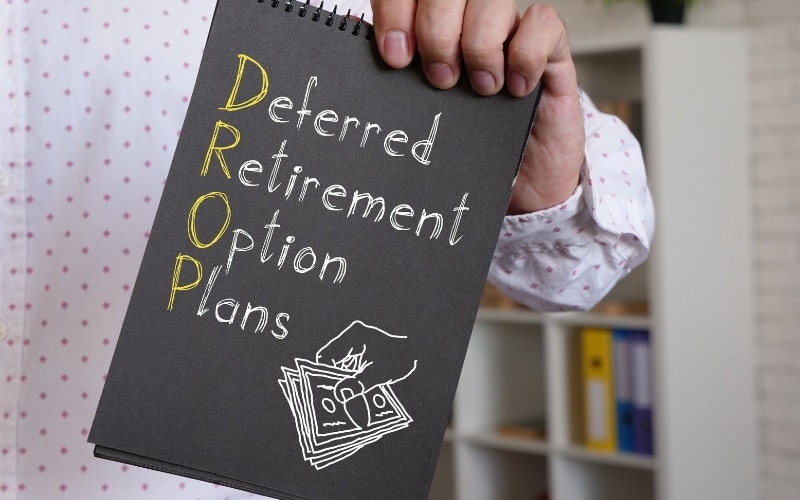A deferred retirement option plan (DROP) is a form of a contract that allows an employee to continue working past their retirement age in exchange for readjusted income and pension restructuring. Those who attain the requirements for DROP transition into a contract that discontinues their current accumulated years of contribution towards pension.
Under DROP, employees are typically paid their pension together with their salaries and overtime. However, the pension contributions are channeled to a different account, called a DROP account. The account is an asset to the holder because it generates additional income through the accumulation of interest.
Drop payment options
While many employers prefer to pay their DROPs on a monthly basis, payments can also be made as a lump sum, a rollover to an Individual Retirement Account (IRA), or a rollover towards a retirement plan offered by the employer.
DROP payment options offer flexibility when it comes to distribution towards different investment plans. One can take a fraction of the payment as a lump sum and roll over the balance into a retirement plan or IRA. It is therefore important to talk to a retirement advisor to help you select the best option(s).
Assessing your suitability and readiness for DROP
Before enrolling in DROP, it is important to evaluate your current financial standing, your career prospects and undertake future needs assessment.
First, you need to know whether you would like to climb up the career ladder in the few years leading to your retirement. If there’s a chance of getting to a higher pay grade, then it is better to postpone your DROP because a higher pay grade will get you more pay towards your current pension scheme.
Secondly, you need to know whether you still have the energy to keep working or you’re almost burning out. Thirdly, determine whether your financial status is good enough for you to proceed to retirement.
Once you enroll in DROP, your previous pension arrangements are discontinued, and you will not have another chance to review your decision. So make sure that you understand what you’re getting into.
How to Calculate DROP Benefits
Length of service: A DROP sets in at a time when an employee is in their sunset years. Therefore, the level of productivity may reduce as they age. Because of this, many employers limit the time spent in DROP to under five years. In rare cases, they may offer eight years. The length of time will influence how much you will earn in a DROP.
Salary and interest to be earned: The DROP will offer you specified benefits, including salary and interest to be earned on your pension. Before signing up, ensure that these terms of payment are within a meaningful range from your previous earnings.
Other Benefits: Retirees often find themselves at a disadvantage when they want to stretch their length of stay in employment. It is not uncommon for employers to withdraw some of the benefits previously enjoyed during the “formal” working years.
Privileges such as having a personal assistant or annual dental check-ups may be withdrawn. Therefore, establish the status of such benefits before committing yourself to DROP.
Terms of payment and taxation: There is an important link between the distribution of your payments and the taxes you will be expected to pay. Lump-sum payments and periodic payments may result in different tax obligations. Therefore incorporate this into your thoughts when signing up for DROP. Settle for the most tax-efficient payment method if presented with different payment options.
Working example
Suppose you worked as a firefighter for 32 years and earned an average annual salary of $60,000. If your employer offers you a DROP with an accrual rate of 3% and a participation time of 5 years, your total earnings from DROP will be calculated as $60,000×3%×32×5. That would translate to $288,000 at the end of the five years.
Benefits of DROP
- It enables employers to hold on to their most valued employees, especially the ones with a rare skill set and exceptional results.
- It provides employees with additional income on top of their regular earnings from pension or retirement savings.
- Some employers offer higher interest accrual rates than some retirement savings plans.
Disadvantages of DROPS
- In some instances, the enrollment window for DROPs may be too short, giving employees little time to plan and assess their options.
- Some payment structures/dispersal put employees at a disadvantage because they come with higher taxes.
Bottom line
DROPs are worthwhile plans for post-retirement financial stability. You should ideally think about the implications of signing up for one before you reach your retirement age. This will enable you to make a well-informed choice and possibly save you from undue tax burdens.
It is also important to talk to a financial advisor to help you decide on how to invest the income you will get from your DROP.



